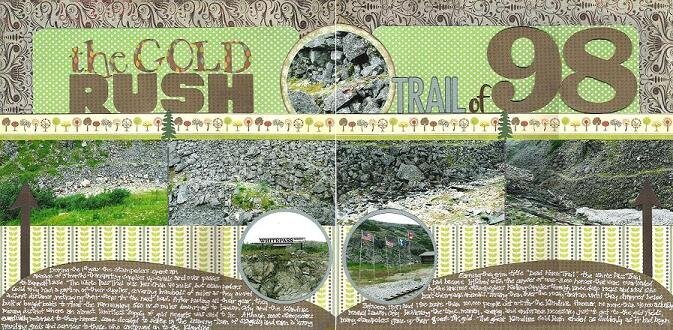

 Give a Cheer
Give a Cheer
During the first year of the Klondike Gold Rush stampeders spent an average of three months transporting their supplies up the trails and over the passes to Bennett Lake. The length of the journey to the gold fields and the desolate conditions the Canadian North-West Mounted Police required stampeders to have a year's supply of food and equipment in order to enter Canada.
The White Pass Trail was less than 40 miles long, but stampeders could only haul a portion of their 1,000 pounds of supplies, covering hundreds of miles as they moved a short distance and then retraced their steps for the next load. Once the prospectors had hauled all of their gear to Bennett Lake, they built or bought boats to float the remaining 560 or so miles downriver to Dawson City and the Klondike mining district where an almost limitless supply of gold nuggets was said to lie.
Although most stampeders eventually returned to their homes, some decided to settle in the booming town of Skagway and earn a living providing goods and services to those who continued on to the Klondike.
Earning the grim title "Dead Horse Trail, the White Pass Trail had become littered with the corpses of over 3,000 horses that were overloaded by the anxious stampeders hauling supplies through knee-deep rocks and mud who beat their pack animals, forcing them over the rocky terrain until they dropped, many of their bones still lie at the bottom on Dead Horse Gulch.
Between 1897 and 1900 more than 100,000 people set out for the Klondike. However, no more than 40,000 actually reached Dawson City. Realizing the time, money, energy, and endurance necessary just to get to the gold fields, many stampeders gave up their quest for gold. The great Klondike Gold Rush ended as suddenly as it had begun
No products have been added to this project.
Thanks for spreading positivity!
May 10, 2010
October 27, 2009
October 26, 2009
October 24, 2009
October 22, 2009
October 21, 2009
October 21, 2009
October 20, 2009
October 20, 2009
October 20, 2009
October 20, 2009
October 20, 2009
October 20, 2009
October 20, 2009
October 20, 2009